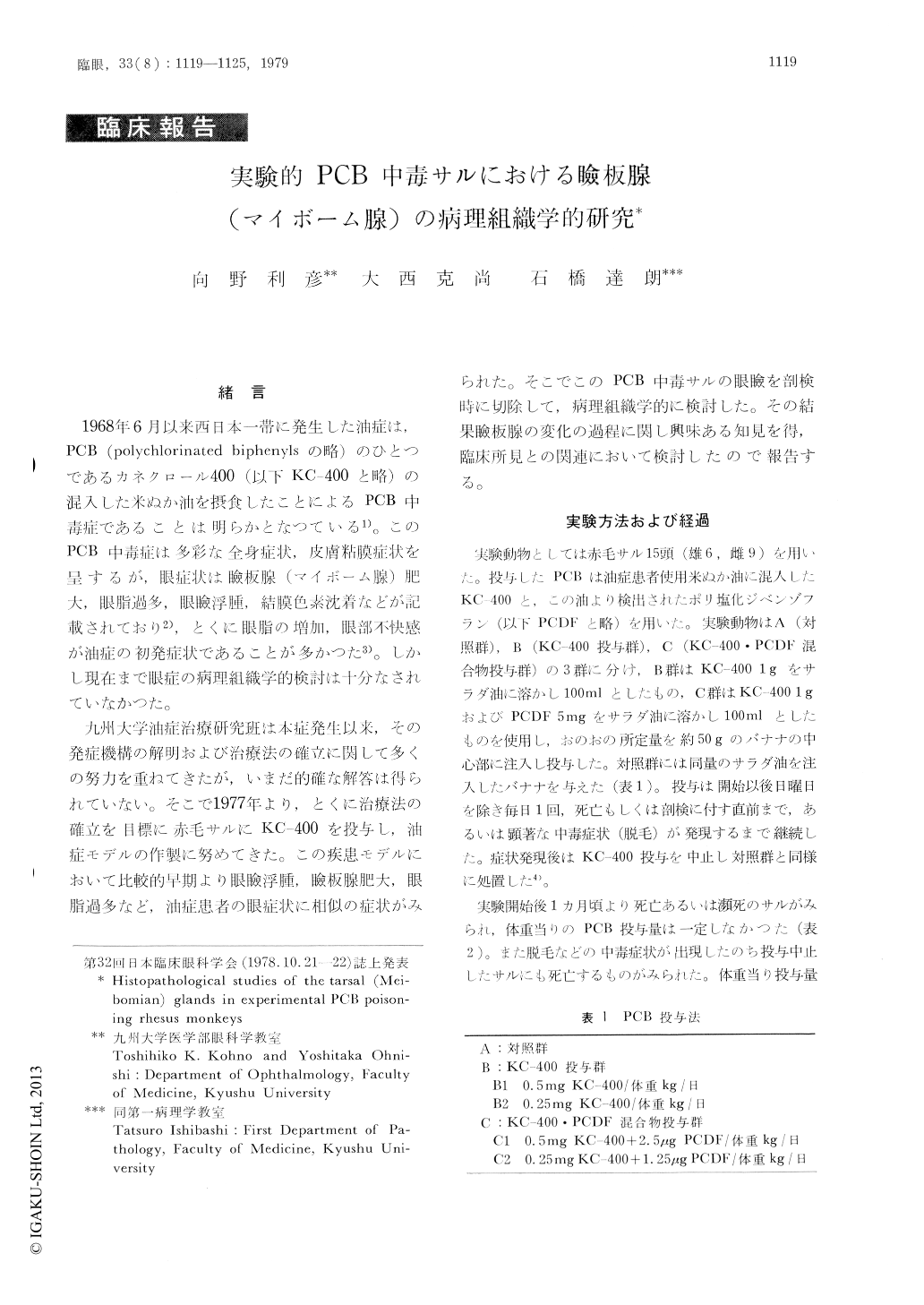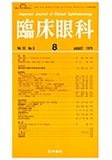Japanese
English
- 有料閲覧
- Abstract 文献概要
- 1ページ目 Look Inside
緒 言
1968年6月以来西日本一帯に発生した油症は,PCB (polychlorinated biphenylsの略)のひとつであるカネクロール400(以下KC−400と略)の混入した米ぬか油を摂食したことによるPCB中毒症であることは明らかとなつている1)。このPCB中毒症は多彩な全身症状,皮膚粘膜症状を呈するが,眼症状は瞼板腺(マイボーム腺)肥大,眼脂過多,眼瞼浮腫,結膜色素沈着などが記載されており2),とくに眼脂の増加,眼部不快感が油症の初発症状であることが多かつた3)。しかし現在まで眼症の病理組織学的検討は十分なされていなかつた。
九州大学油症治療研究班は本症発生以来,その発症機構の解明および治療法の確立に関して多くの努力を重ねてきたが,いまだ的確な解答は得られていない。そこで1977年より,とくに治療法の確立を目標に赤毛サルにKC−400を投与し,油症モデルの作製に努めてきた。この疾患モデルにおいて比較的早期より眼瞼浮腫,瞼板腺肥大,眼脂過多など,油症患者の眼症状に相似の症状がみられた。そこでこのPCB中毒サルの眼瞼を剖検時に切除して,病理組織学的に検討した。その結果瞼板腺の変化の過程に関し興味ある知見を得,臨床所見との関連において検討したので報告する。
Fifteen rhesus monkeys (Macaca mulatta) were used for making the experimental models of oral-ly fed polychlorinated biphenyls (PCB) poisoning. At autopsy the eyelids of these animals were ob-tained for histopathological studies of the tarsal (Meibomian) glands in PCB poisoning.
In the early stage of the process the stratified squamous epithelial cells of the ducts of the tarsal glands manifested hyperkeratosis, hyperplasia and the lumen dilated. The acini had no significant changes in this stage.

Copyright © 1979, Igaku-Shoin Ltd. All rights reserved.


